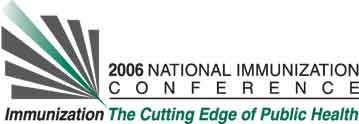Mary Patricia Nowalk
1,
Chyongchiou J. Lin2, Richard K. Zimmerman
1, Alejandro Hoberman
3, Judith A. Troy
1, and Diana H. Kearney
3. (1) Family Medicine & Clinical Epidemiology, University of Pittsburgh, 3518 Fifth Avenue, Pittsburgh, PA, USA, (2) Department of Radiation Oncology, University of Pittsburgh, 580 S Aiken Ave, Suite 110, Pittsburgh, PA, USA, (3) Department of Pediatrics, Children's Hospital of Pittsburgh, 3705 5th Avenue, Pittsburgh, PA, USA
Learning Objectives for this Presentation:
By the end of this presentation, participants will be able to understand the effectiveness of tailored interventions to introduce influenza vaccination to children 6-23 months of age.
Background:
Due to high rates of hospitalization for influenza infections among very young children (<2 years), the Advisory Committee on Immunization Practices (ACIP) initiated new policy in 2002, which encouraged vaccination of healthy children ages 6-23 months against influenza.
Objectives:
To evaluate the effectiveness of implementing tailored interventions to introduce influenza vaccination of children 6-23 months of age in inner-city practices, using qualitative and quantitative methods.
Methods:
A before/after trial with historical and concurrent controls was conducted in six health centers in low-income urban locations. Intervention sites selected and implemented interventions from a menu of strategies, directed at current patients who were 6-23 months old (n=1534). Vaccination rates were measured from medical record reviews. Focus groups of nursing staffs provided evaluative information on strategies.
Results:
Influenza vaccination rates improved significantly at intervention health centers compared with the control center (P<.001). Preintervention (2001-2002) rates ranged from 0 to 7.6%; intervention (2002-2003) rates ranged from 15.2 to 49.2% (P<.001 for all). The number of interventions ranged from 6 to 11. Sites that employed more interventions (Odds Ratio [OR] =1.24; 95% Confidence Interval [CI] =1.15-1.34) and had staff support of the vaccination effort (OR= 1.91; 95% CI=1.4-2.6) had higher vaccination rates.
Conclusions:
Tailored interventions resulted in successful introduction of influenza vaccination of 6-23 month-old children in inner-city health centers, during the ACIP encouragement period. The use of more strategies and enthusiastic staff support may communicate more clearly that influenza vaccination is important, resulting in higher vaccination rates.
See more of Posters
See more of The 40th National Immunization Conference (NIC)

